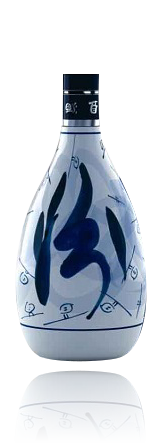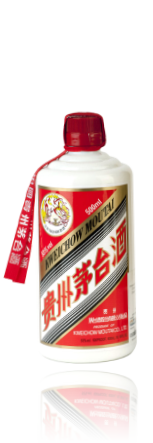China
The top global consumer of red wine
Whereas at global level, vineyard area has remained stable for the past decade, it has declined in Europe. The fall has been counterbalanced by an increase in other parts of the world, particularly in China.
Asian countries no longer simply import wines from the West but produce their own wines to respond to a boom in demand. China is a perfect example of this trend. Between 2002 and 2012, its area under vine soared by 90%. Wine estates are springing up across the country.
Similarily, in less than three decades, China has become the top global consumer of red wine, with sales of almost two billion bottles in 2013. China is now also the world’s fifth-largest producer of grape-based wines. According to an IWSR report, the government clampdown on extravagant spending will continue to impede the development of the top end of the still light wine market. However, future growth at the lower end of the market remains positive thanks to growing demand for inexpensive domestic wines.
The future of Spirits
in Asia
According to The IWSR, “…the spirits market in Asia will reach a significant milestone during the 2016-2020 period, with annual consumption surpassing 2bn cases within the next few years. Despite declines in Japan, South Korea and the Philippines, the ongoing expansion in China and India will propel the region towards this mark. National spirits and local whisk(e)y will account for much of the growth, although imported spirits will make good headway from their small base…” (IWSR Magazine).
Chinese demand for imported spirits has gone through the roof and the spirits industry agrees that China will become the world’s largest market for spirits. Per capita spirits consumption is soaring and growth in the spirits market is outstripping that of the economy and the population. A new young, urban middle class is emerging and adopting Western habits. China is witnessing a huge surge in its middle class. According to Ernst & Young, over 220 million households will earn between US$10,000 and 30,000 a year, rising to over US$35,000 for more than 80 million Chinese people in less than ten years’ time.
Baijiu
A unique world of aroma




Baijiu is by far the most popular spirit in China – along with rice-based wines – but as it is mostly drunk locally, European consumers find it hard to grasp the significance of the industry, unless they live in China, in which case it is hard to avoid.
By comparison, imported spirits still only account for a tiny fraction of the overall market. In 2014, The IWSR estimates that baijiu consumption reached 1.18bn cases for a total value of just under $80bn, equating to nearly 38% of global spirits consumption, although statistics are difficult to check. By comparison, the highest-volume international category, vodka, recorded 480m cases globally in 2014 and the most valuable, whisk(e)y, posted total global sales of $62bn.
The most valuable baijiu brand, Kweichow Moutai, sold an estimated 2.25m cases in 2014 at a price of around $150, making it by far the best-selling ultra-premium brand.
There is a tremendous amount of variety within the baijiu category. There is a huge difference between the umami bouquet and soy-marinated mushrooms of the stone pit-fermented baijiu from Guizhou, the tropical fruit notes of the mud-pit fermented baijiu of Sichuan and the mineral and floral flavours of Shanxi baijiu aged in clay jars for instance. The difference between two baijius can be as great as between a whisky and a tequila!
Baijiu is an integral part of Chinese culture. It is the principal mealtime toasting drink and the most popular gifting drink. The booming economy, combined with China’s culture of using alcohol to cement personal and business relations, has led to an epidemic of binge drinking among government officials, corporate employees and businessmen. Perversely, in China, consumption of baijiu increases with age, as a rising social status obliges people to attend more dinners and banquets to maintain their network of connections.
A large part of the Chinese population believes that baijiu is good for their health. Li Shizhen, a highly influential figure in Chinese medicine, who lived at the height of the Ming Dynasty, discovered that macerating herbs in baijiu (known as “shaojiu” at that time) enhances the efficiency of medical prescriptions. We know nowadays that many active substances in plants can be extracted in alcohol. Confusion has arisen.
Since the end of 2013, baijiu has suffered from the anti-corruption measures taken by the Xi Jinping government to curb expenditure by Chinese politicians. While this crackdown has affected most alcohol categories in China, it has mainly affected the upper end of the baijiu market. The lower end, which is driven more by demand from China’s rapidly expanding middle class, remains resilient and that is where most of the volume growth is occurring.
Younger Chinese consumers are not drinking baijiu with the same enthusiasm as their older compatriots, and they perceive baijiu as not “cool”.
The industry, which is very regional in terms of style and distribution, must now explore other avenues to access new markets and rejuvenate its image amongst young people. Examples could include a move to lower ABV, as seen with soju in South Korea. Baijiu can be made to work well in cocktails, so a move towards the booming mixed drinks category could be a possibility. A few bars that feature baijiu on their cocktail list have recently opened: The Lumos in NY, The Hide in London, Capital Spirits in Beijing…
Baijiu offers a slew of totally new aromas and flavours for creating exotic cocktails.
Jim Boyce, author of the ‘Beijing Boyce’ blog, launched the concept of a ‘World Baijiu Day’ when innovative bars around the world create cocktails for people to discover baijiu. The latest event took place on August 8 and bars in Beijing, Guangzhou, London, Los Angeles and Sydney offered cocktails and food pairings. The date is easy to remember – 08/08 to mark the official opening of the Beijing Olympic Games in 2008.
In August 2015, Spirits Selection by Concours Mondial de Bruxelles managed to secure 530 baijiu entries for the year’s event in Guiyang, which made it a world first. For panel members, it provided a unique opportunity to explore the aromatic world of baijiu. And 169 baijius were awarded, with 8 outstanding grand gold medals.